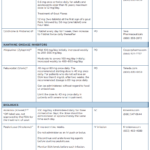These classification criteria are applicable only to people with symptomatic gout, because the prognosis of asymptomatic disease is presently not well delineated in the literature.
The entry criterion was defined as the occurrence of at least one episode of swelling, pain or tenderness in a peripheral joint or bursa. The sufficient criterion was defined as the presence of monosodium urate (MSU) crystals in the synovial fluid of a symptomatic joint or bursa, or tophus. The investigators agreed that there would be no exclusion criteria for the study, because gout often coexists with other diseases and because synovial fluid microscopy can sometimes fail to identify MSU crystals in gout patients.
The new classification criteria differ from previous sets in some important ways, says William J. Taylor, MBChB, PhD, one of the investigators and head of the Rehabilitation Teaching and Research Unit at the University of Otago, in Wellington, New Zealand.
Previous criteria had not been tested for accuracy in an independent data set prior to publication as this one was, he says. Also, the relative importance of each item is reflected in this set’s scoring system, whereas previous criteria weighed them equally.
“The new criteria also incorporate the dose-dependent association of serum urate levels with having gout. Prior criteria categorized serum urate as normal or abnormal, whereas in fact, there is a more continuous relationship between the level of serum urate and gout. This is reflected in these new criteria for the first time,” says Dr. Taylor.
These are the first classification criteria for gout to incorporate advanced imaging modalities, such as ultrasound and dual-energy computed tomography, says Dr. Neogi. These imaging techniques can provide evidence of MSU crystal deposition.
“Also, while the classic ‘big toe’ involvement of gout is still prominent in these criteria, it was recognized from the data we gathered that there are many other common patterns of joint involvement in gout, which is reflected in these new criteria,” she says. “Another novel aspect of these criteria is that there are ‘negative points’ for features that make gout highly unlikely, such as a very low serum urate level of joint fluid that is negative for monosodium urate crystals.”
Multi-Phase, Worldwide Study
The new criteria were developed in a multi-phase study conducted by 22 experts from around the world, says Dr. Neogi.
First, investigators asked rheumatologists familiar with gout and gout patients to identify important distinguishing features of gout, she says. The phase used the interactive Delphi methodology of forecasting.


